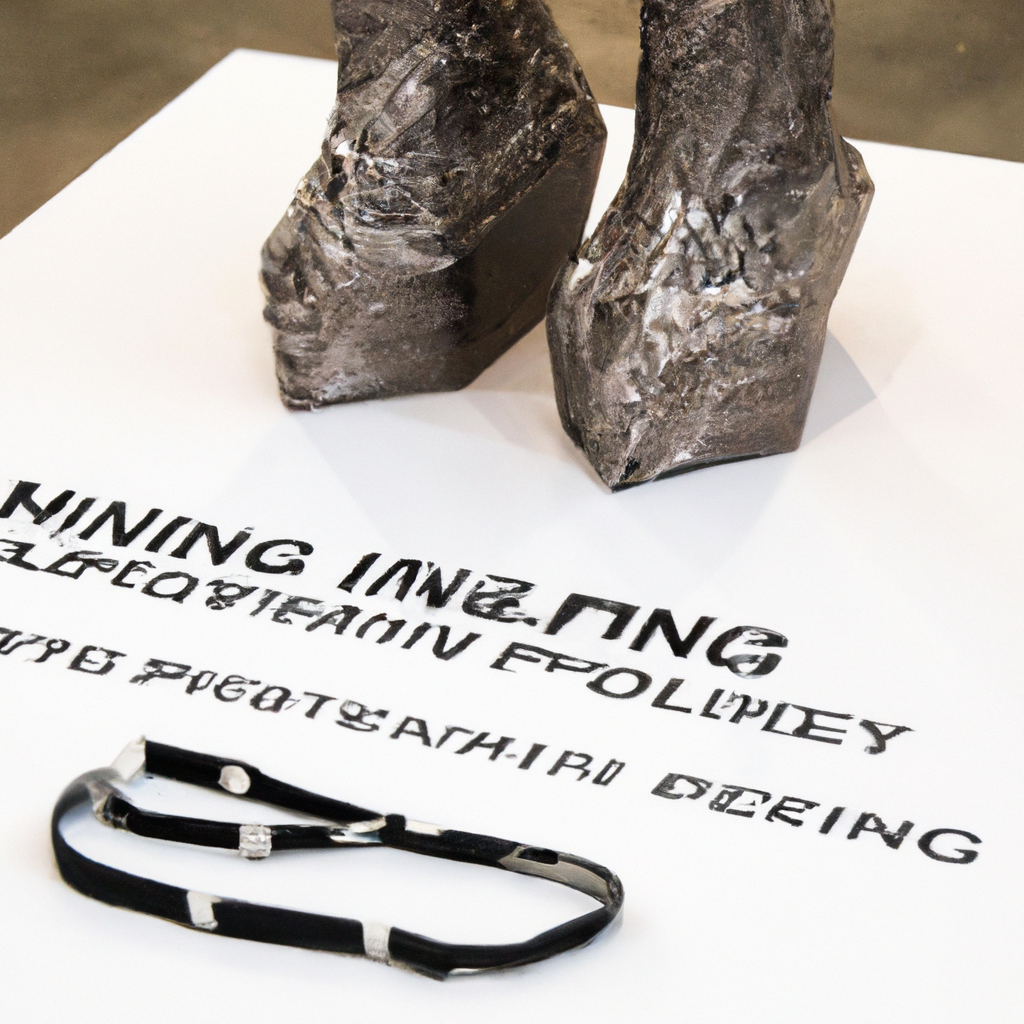The future of fashion is here! 3D printing is quickly becoming a revolutionary force within the industry, pushing the boundaries of how fashion designers create garments and how manufacturers bring garments to market. With 3D printing, designers and manufacturers are completely redefining what it means to create and manufacture fashion, offering new possibilities for designs and producing garments exponentially faster.
1) Crafting the Future of Fashion: 3D Printing Redefines Manufacturing and Design
3D printing has arrived. It is a technological marvel and a revolutionary tool that is slowly but steadily redefining the way fashion is made and designed. Here are three ways 3D printing is completely transforming the landscape of manufacturing and design:
- Faster production: 3D printing allows fashion designers to prototype and produce garments faster and easier. This innovation allows fashion labels to quickly create different looks and tailor-fit garments without a labor-intensive manufacturing process. It can also reduce manufacturing materials and lead time, making it easier for designers to create and market their pieces.
- Cost efficiency: 3D printing removes the need for expensive tools, such as various sewing machines and large-scale production cutters, and enables fashion designers to produce items more quickly and at a lower cost while maintaining quality. With the help of 3D printing technology, fashion labels can stay competitive while producing high-quality goods without the need for a large overhead.
- More customization: 3D printing technology can also unlock the potential for more customization in fashion products. It can be used to quickly create items that are personalized to fit the customer’s measurements and body type. This newfound ability to produce specialized garments can open the door for a larger variety of clothing and accessories that offer greater flexibility and design options.
The possibilities are endless when it comes to 3D printing and fashion. With this revolutionary technology at hand, fashion designers are poised to create an ever-changing landscape of fashion and design, and they are on the cusp of a completely new age of fashion. As the technology advances and more designers embrace this new form of production, the fashion industry will be driven to become more innovative and forward-thinking. The future of fashion is here, and 3D printing is crafting it.
2) Transforming the Art of Design: Harnessing Technology to Create Innovative Outfits
In the modern world, crafting exceptional apparel pieces takes on a whole new level with technology at play. It can be used to create unique garments with distinctive styles and patterns that leave us in awe.
Craftsmen in the industry are able to use a range of hi-tech solutions to design highly interactive designs in line with the latest fashion trends. With components like built-in motion detectors, intelligent weaving machines and LED-embedded fabric, craftsmen are able to produce dynamic pieces that are:
- Lightweight – Lightweight garments are essential to staying comfortable, no matter the weather.
- Low-maintenance – Low-maintenance is a common requirement among industrialized clothing.
- Eco-friendly – Eco-friendly fabrics are designed with sustainable materials, making them perfect for those looking to limit their environmental impact.
In addition, technologies such as 3D printing allow fashion designers to quickly develop garments with intricate patterns that no other technology could possibly achieve. This manufacturing technique has also given rise to the demand for customizable clothing items, allowing people to create their own clothing pieces that reflect their own personal style.
Innovative designs can be seen everywhere, from the runway to the streets. Technology has made fashion more accessible, more interactive and more versatile than ever before. It has allowed us to explore the world of fashion in revolutionary ways.
3) Going Beyond Printed Fabrics: 3D Printing Ushers in a New Era of Customization
The latest trend in fashion innovation is no ordinary run-of-the-mill fabric. Through 3D printing of textiles, fashion designers are creating garments with limitless design possibilities. Here are some of the amazing ways that 3D printing is ushening in a new era of customizability for the fashion industry:
- Exceedingly Complex Patterns – With 3D printing, intricate patterns and designs on fabrics can be created with finesse and accuracy that would be extremely difficult to replicate with any other method. Through 3D printing, images and decorations can reach sharp edges and details of high-resolution.
- Lightweight Fabrics – With traditional fabric printing, the decoration may be pressed onto the fabric causing a certain degree of stiffness and weight. However with 3D printing, the decorations are un-pressed, producing a much softer and lighter fabric.
- Continuous Printing – When 3D printing, images and designs can go continuously across seams with no interruption. This feature improves the comfort of the fabric and results in a much smoother pattern that is more aesthetically pleasing to the eye.
As 3D textile printing technology progresses, the possibilities are endless. Designers can now create garments with a wider range of complex shapes and textures, giving fashion a more personalized touch than ever before. With 3D printing, customization of garments is virtually limitless and the fashion industry is taking note.
4) Cutting-Edge Meet High-Style: How 3D Printing is Changing How Clothes are Manufactured
3D printing has revolutionized the fashion industry in many ways, from clothing styles to production techniques. Instead of traditional manufacturing methods, 3D printing provides designers and manufacturers with more options and opportunities to create unique pieces.
Here are some of the perks of this relatively new technology for fashion:
- Flexibility: 3D printers allow for greater flexibility in design and production. With 3D printing, manufacturers can create pieces that are complex with intricate details, such as ruffles, pleats, or fringe.
- Sustainability: 3D printing is more sustainable. Since the production is digital, there is less waste generated. The production of clothing is also faster and more efficient, leading to fewer resources used.
- Cost: 3D printing is more cost-effective than traditional manufacturing methods. The process is quicker, allowing for lower production costs. It also requires less manpower, which can help keep production costs down.
Thanks to 3D printing, fashion has become more creative and luxurious. Designers are now able to create complex pieces that are also environmentally friendly and cost-effective. 3D printing has allowed for a vast array of clothes to be produced quickly and sustainably, thus revolutionizing our fashion industry.
5) Taking Sustainable Fashion to New Heights: An Environmentally Conscious Model of Clothing Design
In recent years, sustainable fashion has made huge strides in changing the way people look at clothes. Eco-friendly and mindful clothing choices are becoming increasingly popular as consumer awareness of the impact our lifestyle has on the environment continues to evolve. Here are five ways taking sustainable fashion to new heights is transforming the clothing design industry.
- Structured design: Designers are creating clothing with longevity in mind. By focusing on fashion pieces with a classic timeless design, clothing can be worn for many seasons. The trend of timeless fashion keeps clothing from ending up in landfills later, reducing landfill waste and promoting eco-friendly choices.
- Recycled fabrics: Innovative fabric technologies are leading the way to sustainable fashion. Upcycling deadstock fabric (unused fabric of a company or brand) and using recycled materials such as post-consumer plastic bottles are formulating fashionable clothing with an eco-friendly conscience.
- Transparent supply chain: By being transparent about the supply chain, companies can understand the journey of their piece from start to finish. This helps to ensure there is no unethical labor practices used along the way and that any environmental damage is minimized.
- Durable design: Durability should be the focus when designing for a sustainable future. When clothing is made with greater quality, people are more inclined to keep them for a longer period of time. Minimizing cotton production also helps to reduce water use, a process known to have serious environmental implications.
- Raising awareness: Educating consumers about the consequences of buying fast fashion is vital in creating a sustainable future. Encouraging people to invest in timeless fashion pieces helps them make mindful purchases that will last them for multiple seasons and beyond.
Sustainable fashion is no longer a concept reserved for the future as fashion designers are now creating designs to cater for an environmentally conscious lifestyle. By following these five steps, the fashion industry is creating bold new models of clothing design with an environmentally conscious message.
3D printing in fashion has indeed made major strides in evolving and revolutionizing how manufacturing and design is approached. With unprecedented successes, 3D printing is now well on its way to redefining the industry’s future standards. Get ready to be taken away by the new and innovative looks created using 3D printing technology—this is just the beginning of an extraordinary journey for 3D fashion.


